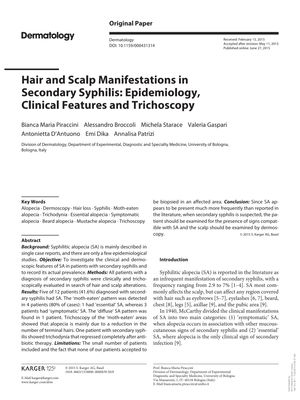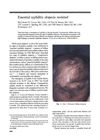Hair and Scalp Manifestations in Secondary Syphilis: Epidemiology, Clinical Features and Trichoscopy
January 2015
in “
Dermatology
”

TLDR Hair loss in secondary syphilis is more common than thought and can be reversed with antibiotics.
In a study from January to June 2014 involving 12 patients with secondary syphilis, 5 (41.6%) were found to have syphilitic alopecia (SA), which is a higher prevalence than the 2.9 to 7% previously reported. The majority of these patients displayed a 'moth-eaten' pattern of alopecia, and one patient experienced trichodynia, a scalp discomfort that resolved after antibiotic treatment. Trichoscopy showed a reduction in terminal hairs in affected areas. The findings suggest that SA is more common in secondary syphilis than previously recognized and that hair and scalp abnormalities, including SA and trichodynia, are completely reversible with antibiotic therapy. Dermatologists are encouraged to look for signs of SA in patients with suspected secondary syphilis. The study was limited by its small sample size and lack of biopsies for histopathological assessment.


